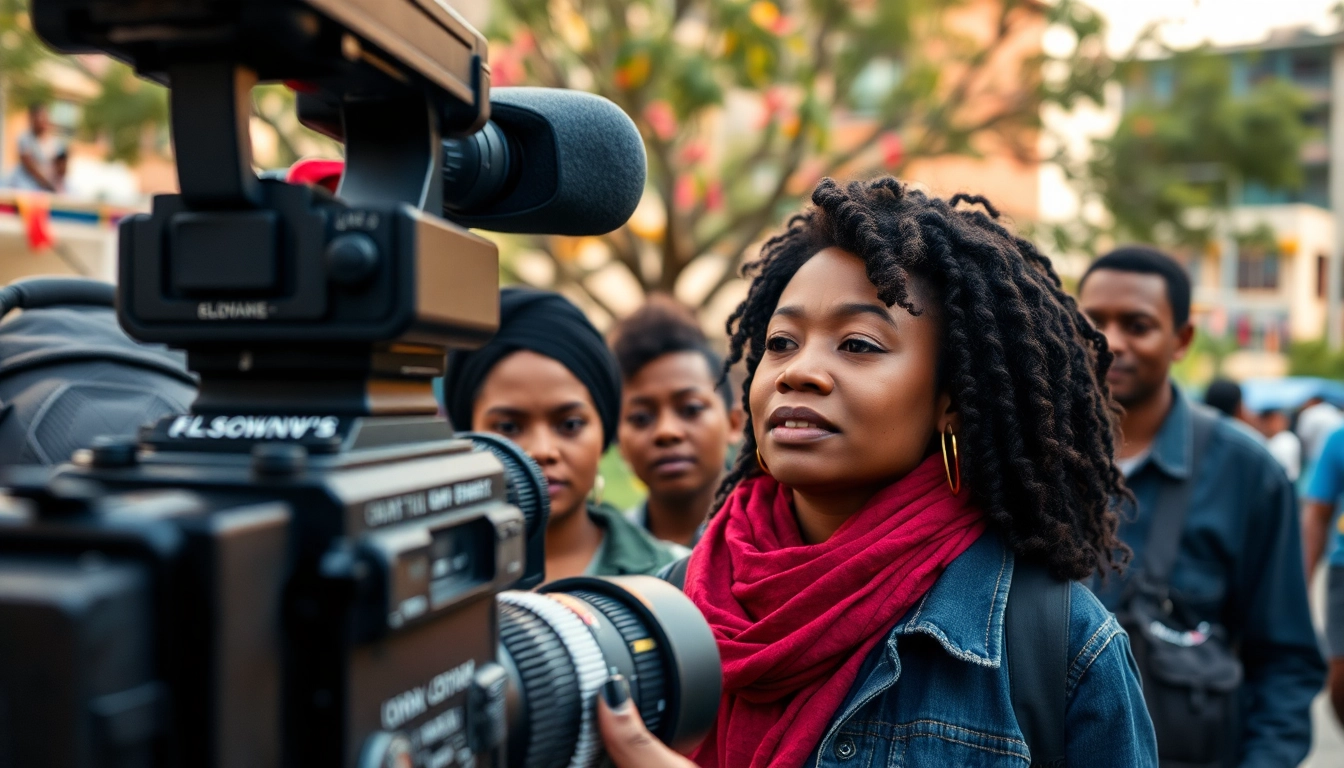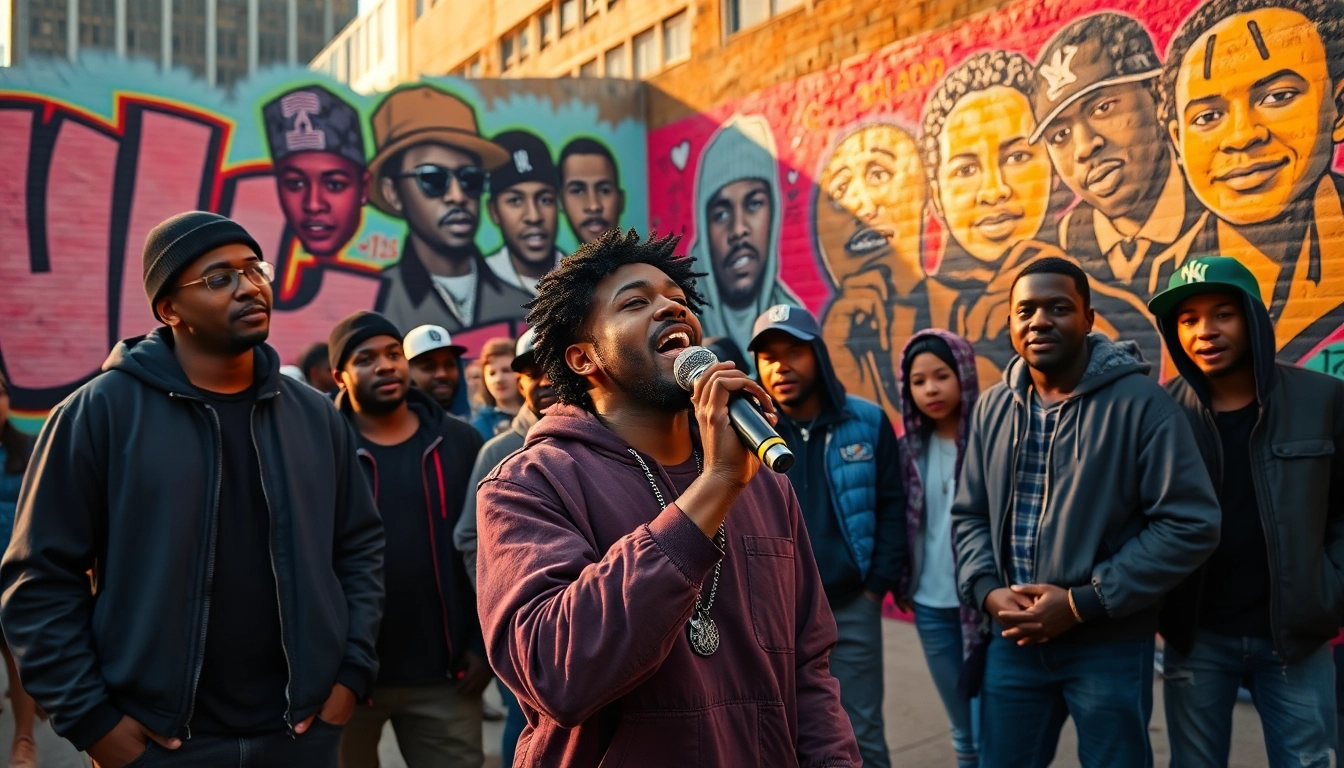Understanding Stories & Documentaries
Defining Stories & Documentaries
In a world saturated with information, the art of storytelling remains a powerful tool for conveying complex ideas, emotions, and truths. Documentaries are a unique form of storytelling that blends factual reporting with artistic expression, drawing viewers into real-world narratives that can challenge perceptions and spark change. At its core, a documentary is a non-fiction narrative that portrays actual events, people, and experiences. It serves to inform, educate, and entertain, often leaving audiences with deeper insights into the human condition.
The fusion of Stories & Documentaries is essential for creating engaging content that resonates with viewers. Documentaries can take various forms, including feature films, short films, series, and even interactive web-based content, which allows for exploration of themes in innovative ways. A well-crafted documentary evokes emotions, engages audiences, and often drives them to take action, making it a crucial vehicle for social change.
The Importance of Narrative in Documentaries
The narrative structure in documentaries plays an instrumental role in shaping the viewer’s experience. Unlike traditional films that rely on fictional stories, documentaries utilize real-life events and interviews to weave a compelling narrative. A strong narrative framework guides the audience through the complexities of a story, making the information more accessible and relatable. Effective documentaries employ various storytelling techniques to build tension, evoke empathy, and provide clarity on intricate topics.
Moreover, the use of narrative can enhance the educational aspects of documentaries. By presenting facts within the context of a story, filmmakers can foster greater understanding and retention of information. Different narrative styles, whether linear, non-linear, or participatory, can also influence how viewers perceive and engage with the subject matter. The essence of storytelling in documentaries lies in its ability to humanize issues, allowing audiences to connect on a personal level.
Different Styles and Genres of Documentaries
Documentaries come in a multitude of genres and styles, each offering a different lens through which to examine reality. Among the most prevalent are:
- Expository: Often characterized by a narrator who presents factual information and guides the storyline, expository documentaries aim to educate and inform.
- Observational: This style captures events as they unfold naturally, allowing the audience to witness real-life occurrences without intrusive narration or direction.
- Participatory: Filmmakers become part of the story, engaging directly with subjects and influencing the narrative through their presence.
- Reflective: These documentaries encourage viewers to consider the implications of the subject matter, often breaking the fourth wall to address the audience directly.
- Performative: This style emphasizes a filmmaker’s personal engagement with the topic, exploring emotional truths and subjective experiences rather than solely presenting factual data.
Understanding these styles allows filmmakers to choose the best approach for their narratives, ensuring that stories are told in the most impactful way possible.
Key Elements of Compelling Documentaries
Engaging Story Structure
The structure of a documentary is foundational to its effectiveness in engaging an audience. Just like in traditional storytelling, an introduction, rising action, climax, falling action, and resolution can provide a satisfying narrative arc. Crafting a compelling beginning captures viewers’ attention, while the ensuing development deepens their understanding of the themes at play. A well-executed climax heightens emotional stakes, prompting reflection and dialogue among viewers.
Moreover, pacing is crucial; a documentary must maintain a rhythm that keeps the audience engaged, utilizing varying speeds of storytelling to underscore emotion and meaning. One technique is to intertwine personal stories with broader contextual themes, creating a tapestry of individual experiences that enhance relatability. This layered approach not only keeps viewers hooked but also stimulates critical thought, sparking conversations long after the credits roll.
Character Development and Authenticity
In documentaries, character development heavily influences viewers’ emotional engagement. Authenticity is key; audiences connect more deeply with real people and their journeys than with abstract concepts or statistics. The development of characters—whether they are subjects of the documentary or the filmmakers themselves—creates emotional touchpoints that resonate with viewers. This connection is essential for eliciting empathy and understanding the complexities of the human experience.
To cultivate authenticity, filmmakers must prioritize diverse perspectives and represent the subjects’ stories truthfully. Ethical considerations come into play when portraying real individuals, necessitating a balance between narrative drive and respect for those featured. By allowing subjects to express their voices and share their truths, filmmakers can create an atmosphere of trust that enhances the documentary’s emotional impact.
Visual and Audio Techniques that Enhance Storytelling
The visual and auditory elements of a documentary significantly influence how stories are perceived and memorized. Cinematography plays a crucial role; creative shots, angles, and lighting can set the mood and tone, conveying emotions that words alone may not capture. Close-ups might highlight moments of vulnerability, while wide shots can emphasize isolation or grandeur, depending on the story’s needs.
Lighting is equally important, as it can alter the perception of a subject and invoke specific emotional responses. The use of music and sound effects adds another layer, serving to heighten tension, foster nostalgia, or create a sense of urgency. Effective documentaries often use audio embellishments not just as background elements but as critical narrative tools that evoke the desired emotional state and reinforce the storytelling.
Production Process for Effective Documentaries
Researching and Pre-Production Planning
A successful documentary starts long before filming begins; thorough research and pre-production planning lay the groundwork for effective storytelling. Documentarians must delve deep into their subjects, exploring existing literature, interviews with experts, and firsthand accounts. This research phase helps identify narratives worth telling and ensures a comprehensive understanding of the context surrounding the story.
Pre-production involves logistical planning, determining the necessary resources, and organizing filming schedules. Establishing clear objectives, identifying potential challenges, and laying out a budget are essential steps that facilitate smoother production. Filmmakers should also outline their creative vision, considering how they want to frame their narrative and what stylistic elements will best tell the story.
Filming Techniques and Equipment Selection
Choosing the right equipment and filming techniques significantly impacts the quality of the documentary. High-quality cameras, stabilization tools, and sound recording equipment enhance the visual and audio experience. Documentaries often involve a variety of shots—from handheld close-ups to steady wide angles—both of which bring different narrative elements to life.
The choice of location and how it is filmed can also influence the narrative quality. Filming in natural environments that reflect the story’s themes invites viewers into the scene, making them feel involved in the narrative. Additionally, filmmakers should be prepared to adapt their techniques in the moment; flexibility can lead to unexpectedly powerful moments that a planned script might not capture.
Post-Production Editing Processes
Post-production is where the documentary truly transforms from raw footage to a polished narrative. Editors play a crucial role in selecting the most impactful scenes, determining pacing, and shaping the overall tone of the piece. The editing process requires careful consideration of how each clip relates not only to the individual story arc but also to the documentary’s thematic framework.
Storyboards and rough cuts guide the editing process, allowing for the visual flow to be assessed. This stage also involves sound design and music incorporation, which can elevate emotional engagement and reinforce the documentary’s pacing. Color grading is another critical element, as it affects the visual aesthetics and mood. Ultimately, the goal of editing is to craft a cohesive and compelling narrative that resonates with viewers.
Marketing and Distributing Stories & Documentaries
Identifying Target Audience and Channels
Effective marketing strategies are essential for the successful distribution of documentaries. Understanding the target audience involves identifying demographics, psychographics, and viewing habits. Knowing who will be most interested in the documentary’s subject matter allows filmmakers to tailor promotional content and select suitable distribution platforms.
Various channels can be utilized for distribution, including film festivals, streaming platforms, television networks, and educational institutions. Each of these venues caters to different segments, allowing creators to maximize audience reach. Engaging with communities online through social media platforms can also foster interest and spark conversations around the documentary’s themes.
Utilizing Social Media for Promotion
Social media has revolutionized the way documentaries are marketed and disseminated. Creating an online presence through platforms such as Instagram, Twitter, and Facebook enables filmmakers to connect directly with audiences, build anticipation, and foster community engagement. Behind-the-scenes content, teasers, and interviews can cultivate interest and provide exclusive insights into the documentary-making process.
Engaging audiences with interactive content, such as Q&A sessions or live streams with the filmmakers and subjects, can enhance emotional investment and lead to greater overall impact. Additionally, leveraging user-generated content can amplify reach; when viewers share their thoughts and reactions, it extends the documentary’s narrative presence beyond its initial release.
Fundraising and Crowdfunding Strategies
Documentary filmmaking often requires substantial financial investment, necessitating effective fundraising strategies. While traditional funding sources, such as grants and sponsorships, remain important, crowdfunding has become a popular alternative. Platforms like Kickstarter and Indiegogo enable creators to solicit support directly from the public, allowing passionate audiences to contribute to projects they believe in.
Successful crowdfunding campaigns typically involve engaging storytelling that highlights the project’s unique goals, the importance of the subject matter, and the potential impact of the completed documentary. Perks for backers, like exclusive previews or credits, can also motivate contributions. Effective communication and regular updates during the campaign sustain momentum and foster trust with supporters.
Measuring Impact and Success of Documentaries
Audience Engagement Metrics
Measuring the impact of documentaries goes beyond box office revenue. Audience engagement metrics, such as viewership statistics, online discussions, and social media interactions, offer insight into how effectively a documentary resonates with its audience. Tools such as Google Analytics can help filmmakers track web traffic and user behavior related to the documentary’s online presence.
Feedback mechanisms, including surveys and viewer feedback, can also provide qualitative data on audience perceptions. Understanding how the documentary influences perceptions, sparks dialogue, or motivates action can inform future projects and marketing initiatives.
Critical Reception and Awards
Critical reception plays a pivotal role in measuring a documentary’s success. Reviews from industry critics, film festivals, and award nominations can enhance visibility and credibility. Prestigious awards can propel a documentary to a wider audience, as they often signal quality and significance.
Filmmakers should actively seek out feedback from critics and engage with their audiences to gauge how well the documentary aligns with the intended message and impact. Analyzing reception not only highlights areas for improvement but can also provide valuable lessons for future endeavors.
Long-term Impact on Awareness and Change
Ultimately, the true measure of a documentary’s success is its long-term impact on awareness and change. Documentaries have the power to shift perspectives, challenge societal norms, and inspire action. Tracking how a documentary influences public discourse, policy decisions, or grassroots movements can signify its effectiveness.
Engaging with advocacy organizations that align with the documentary’s message can also help extend its reach beyond initial audiences. Collaborating with community organizations, educational institutions, and activists amplifies the potential for meaningful change, ensuring that the stories told continue to resonate and inspire action long after the documentary has aired.



